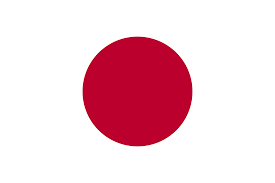Improving National Sargassum Management Capabilities in the Caribbean
Improving National Sargassum Management Capabilities in the Caribbean
Significant influxes of sargassum seaweed (Sargassum natans and S. fluitans) are a significant threat to development within the Caribbean region. Since 2011, high volumes of the seasonal macroalgae have been smothering beaches, resulting in significant negative impacts on lives and livelihoods, particularly of coastal inhabitants; besides its negative effect upon tourism, it destroys fishing equipment, impedes access to fishing grounds, disrupts marine transport, contributes to erosion, harms wildlife through hampering the possibility of nesting of sensitive species and the introduction of invasive species. The rotting seaweed also has been linked to numerous human health concerns. The influx of sargassum is linked to increased oceanic temperatures, oceanic currents and nutrient runoff from rivers, as far as the Brazilian shelf and West Africa.
Against this backdrop, UNDP Country Offices in Trinidad and Tobago and Barbados are implementing the Project for Improving National Sargassum Management Capabilities in the Caribbean, funded by the Government of Japan. Running from 2022 to 2025, the project invests USD12.3 million in the region to bolster efforts to collect, remove, and dispose of sargassum. Under the project, five participating countries – Barbados, St. Kitts and Nevis, St. Lucia, St. Vincent and the Grenadines, and Trinidad and Tobago – will benefit from the provision of equipment, expertise, and technical assistance to deal with sargassum seaweed. Trinidad and Tobago will benefit from an allocation of USD 2 million for equipment. This will include equipment such as floating booms and barriers, sargassum harvester vessels and barges for offshore collection and removal, and tractors, and dump trucks for onshore removal. At the regional level, Trinidad and Tobago is represented by the Institute of Marine Affairs, while at the national level, a multi-stakeholder Project Steering Committee comprising the Maritime Services Division, Ministry of Works and Transport, Office of Disaster Preparedness and Management, Tobago Emergency Management Agency (TEMA), the Trinidad and Tobago Coast Guard, the University of Trinidad and Tobago and the University of the West Indies, the Tobago Tourism Association, regional corporations from sargassum-affected areas and the umbrella non-governmental organization Council for Presidents of the Environment. Collectively, these agencies work on the selection of sites for the deployment of equipment, national communications and early warning systems, and research into the effects of sargassum and downstream uses of the resource.
These efforts are aimed at reducing the negative impact of sargassum by implementing approaches that are proactive, timely, efficient and inclusive of those most affected by the sargassum challenge. Throughout the project's life, stakeholder engagement will be undertaken to ensure the meaningful involvement of those most affected by sargassum. Deployment in Trinidad and Tobago will be supported by a team of experts operating out of Barbados.
Fast Facts:
Donor:
Government of Japan
Total Project Budget:
USD12.3 million
Budget for Trinidad:
USD 2 million
Period:
2022 – 2025
Sargassum Innovation Challenge
As adjunct to the regional project, United Nations Development Programme’s (UNDP) Accelerator Lab and the Global Environment Facility Small Grants Programme (GEF SGP) created the Sargassum Innovation Challenge. Aimed at developing creative and feasible ways of utilizing sargassum, the Innovation Challenge will act as a springboard to launch long-term solutions for the large volumes of sargassum that land on our shores.
Through this challenge, civil society organizations and non-governmental organizations will be allowed to develop viable products and services that utilize sargassum seaweed. Solutions must be market-based products or digital applications and contribute to the innovative use, management, and responsive to the sargassum problem in Trinidad and Tobago. In the wake of major sargassum events, most notably in 2011, 2015, and 2018, several territories across the region have already begun creating novel ways of using sargassum. Examples include fertilizers in St. Lucia, paper and packaging in St. Bart’s, animal fodder and charcoal in Jamaica, and construction bricks in Mexico. The Sargassum Innovation Challenge aims to put Trinidad and Tobago among the list of innovators for sargassum seaweed, prioritizing work that includes communities and vulnerable, at-risk coastal inhabitants. The Challenge will invest a total of USD150,000 in small-scale projects that will be community-based, generate revenue and be sustainable, thereby converting sargassum seaweed from a nuisance to a natural resource. Projects should run from January 2024 to December 2024.

Japanese Flag

 Locations
Locations





